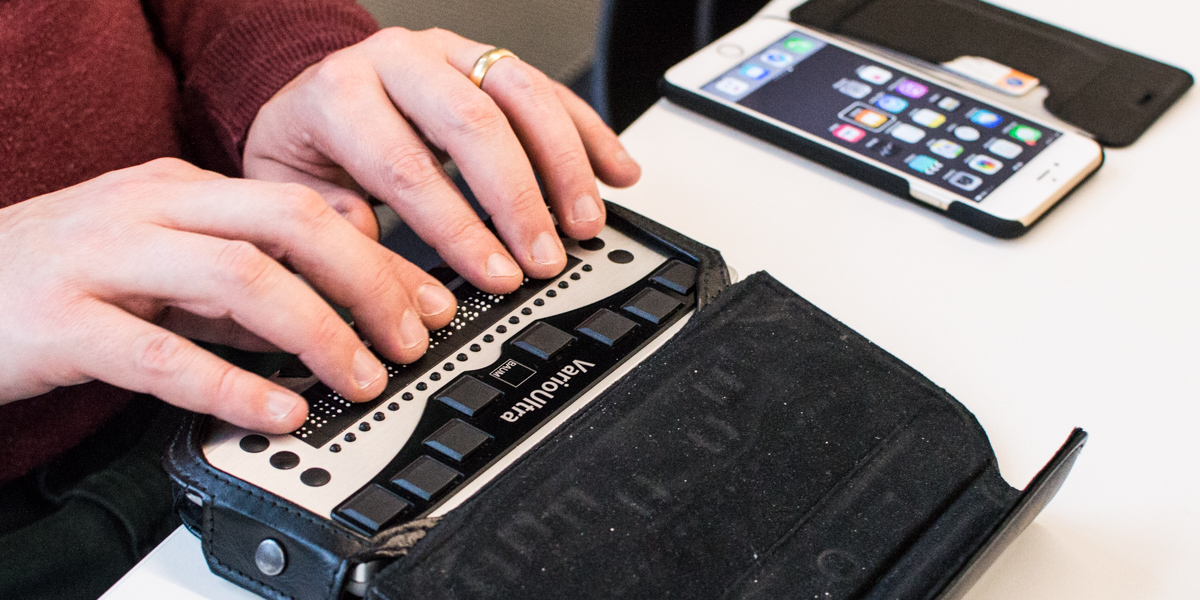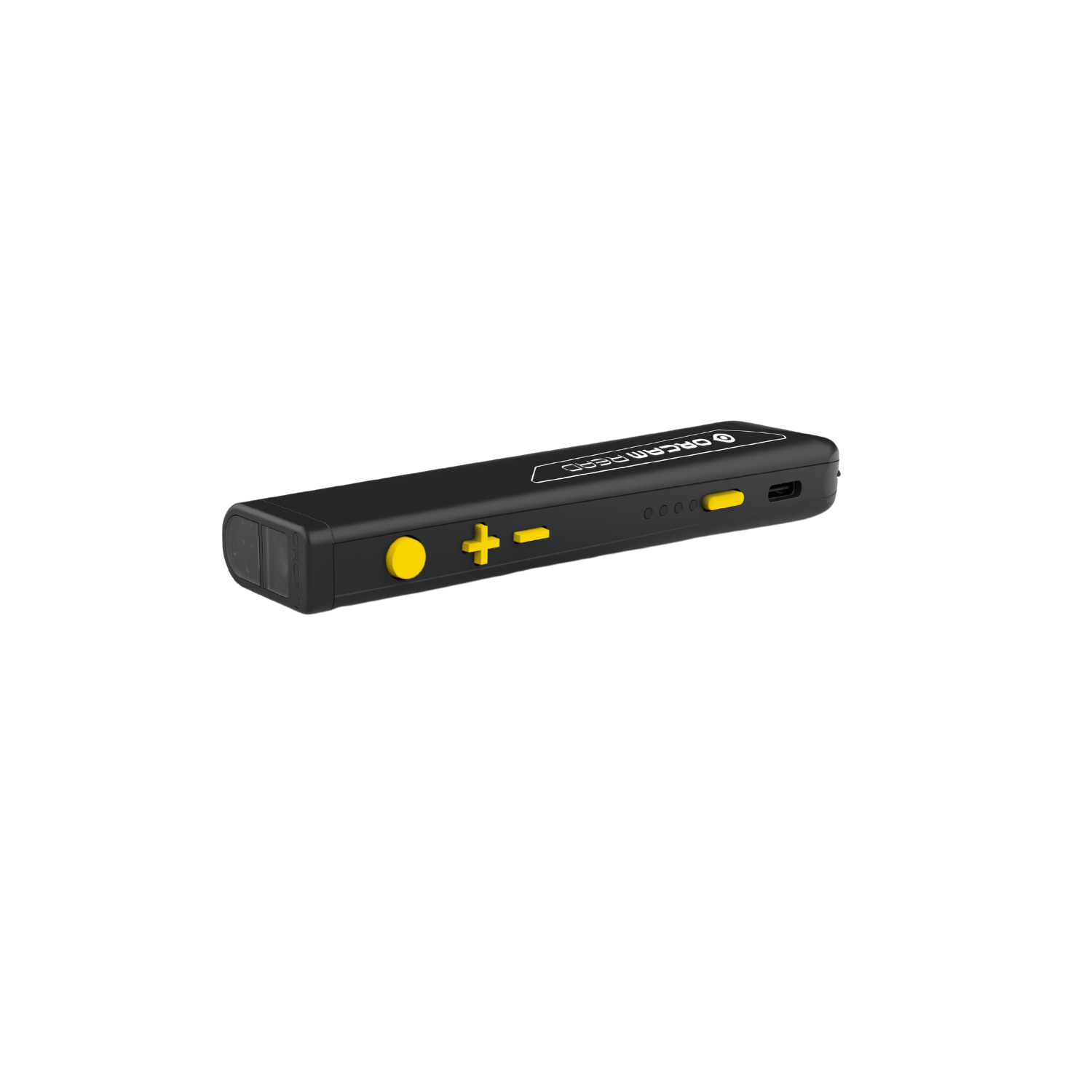Braille Displays and Notetakers: Key Tools for Learning and Work
Empowering Independence With Assistive Technology for the Blind
The assimilation of assistive innovation into the lives of people with aesthetic impairments stands for a considerable improvement in promoting independence and self-sufficiency. From cutting-edge display readers to advanced wise walking canes, these devices not only boost day-to-day navigating and communication yet likewise encourage customers to engage meaningfully in numerous elements of life. As we check out the myriad advantages and real-world applications of these technologies, it comes to be critical to take a look at the hidden variables that contribute to their efficiency and the capacity for future advancements in this vital field.
Overview of Assistive Innovation

The advancement of assistive technology is based in principles of inclusivity and empowerment. Technologies in software program, equipment, and sensory enhancements supply users with choices tailored to their details requirements. From display visitors that convert text to speech, to tactile gadgets that share details with touch, these devices transform the means people engage with their surroundings.
In enhancement to functional applications, assistive technology promotes better social addition and participation in numerous industries, including education and work (Mobility aids for visually impaired users). As study and growth proceed to develop, the possibility for assistive innovation to further improve the lives of visually impaired individuals stays appealing, leading the way for a more equitable society where every person can flourish
Sorts Of Assistive Tools
A selection of assistive devices have arised to support people with visual disabilities, each developed to satisfy particular demands and improve day-to-day performance. These tools range from low-tech remedies to high-tech developments, offering diverse choices for individuals.
Low-tech gadgets include magnifiers and large-print materials that aid in analysis and writing. Braille devices, such as Braille stylus pens and slates, make it possible for tactile analysis and interaction. Positioning and flexibility help, like white walking sticks, help users navigate their atmosphere safely.
On the higher end of the spectrum, digital zoom systems and screen visitors provide substantial assistance. Digital magnifiers enable individuals to expand text and photos on screens, while display visitors convert electronic web content into synthesized speech, assisting in access to details on mobile phones and computers.
Smartphone applications additionally play a crucial function, providing features like message recognition and navigating assistance. Wearable innovation, such as clever glasses outfitted with enhanced reality, is becoming an appealing device to boost situational understanding.
Benefits of Assistive Modern Technology
The integration of assistive modern technology significantly improves the lifestyle for people with aesthetic disabilities. These technologies encourage individuals by advertising independence, enabling them to navigate their settings better and execute daily jobs with greater simplicity. Screen readers and zoom software program permit individuals to gain access to digital info, cultivating specialist and instructional opportunities that might have previously been out of reach.
In addition, assistive devices such as smart canes and GPS applications give real-time navigating assistance, enhancing wheelchair and safety. This boosted freedom not just enhances self-esteem however likewise motivates social interaction, allowing customers to participate more fully in their neighborhoods.
Assistive innovation likewise promotes interaction, aiding users get in touch with others through voice acknowledgment and text-to-speech applications. This capability is crucial for preserving connections and accessing essential info.
Additionally, the customization options available with several assistive technologies ensure that users can customize gadgets to their specific requirements, even more enhancing use and performance. Generally, the advantages of assistive innovation for individuals with aesthetic impairments are profound, promoting an extra inclusive society where everybody can seek their desires and goals.
Study and Success Stories
Highlighting the transformative effect of assistive modern technology, various case research studies illustrate just how individuals with aesthetic impairments have actually effectively integrated these tools right into their every day lives. One compelling instance involves a college trainee that utilized display analysis software program to browse scholastic products and on the internet sources successfully. This technology not only promoted her education yet additionally enhanced her confidence in participating in discussions and group jobs.
One more study features an expert who utilizes a mobile phone application made for navigation and item acknowledgment. By utilizing this app, he has actually reclaimed freedom in both his individual and workplace, permitting him to commute individually and involve with coworkers extra properly.
In addition, a retired person shared her experience with braille e-readers, which enabled her to here access a large range of literature and stay connected with her community via book clubs.
These success tales highlight the vital function of assistive innovation in cultivating independence, enhancing lifestyle, and advertising social combination for people with aesthetic problems (Screen readers for the blind). By accepting these innovative devices, customers can conquer challenges and take chances that add to their individual and professional fulfillment

Future Trends in Assistive Innovation
Advancement in assistive innovation is poised to redefine the landscape this page of support for individuals with visual disabilities. Emerging trends highlight the assimilation of artificial intelligence (AI) and artificial intelligence, which enhance the performance of devices that assist with navigating and info accessibility. AI-driven applications are now capable of analyzing visual data in real-time, making it possible for individuals to involve with their environment extra separately.
In addition, the advancement of wearable modern technology is advancing swiftly. Smart glasses furnished with augmented truth (AR) can give audio descriptions of surroundings, changing just how users connect with public spaces. These devices not just promote autonomy however additionally foster social addition.
In Addition, the Internet of Things (IoT) is making homes smarter, enabling for smooth connectivity in between assistive devices and daily devices. This connectivity empowers customers by making it possible for voice-activated controls and computerized responses tailored to private requirements.
Verdict
To conclude, assistive technology plays a critical function in equipping people with visual disabilities by improving their independence and involvement with their environments. The varied range of see applications and devices offered not just promotes navigating and interaction yet likewise advertises social combination and chances for individual and expert development. As advancements continue in this area, the possibility for enhancing the lifestyle for those with aesthetic disabilities will broaden, cultivating higher autonomy and empowerment.
